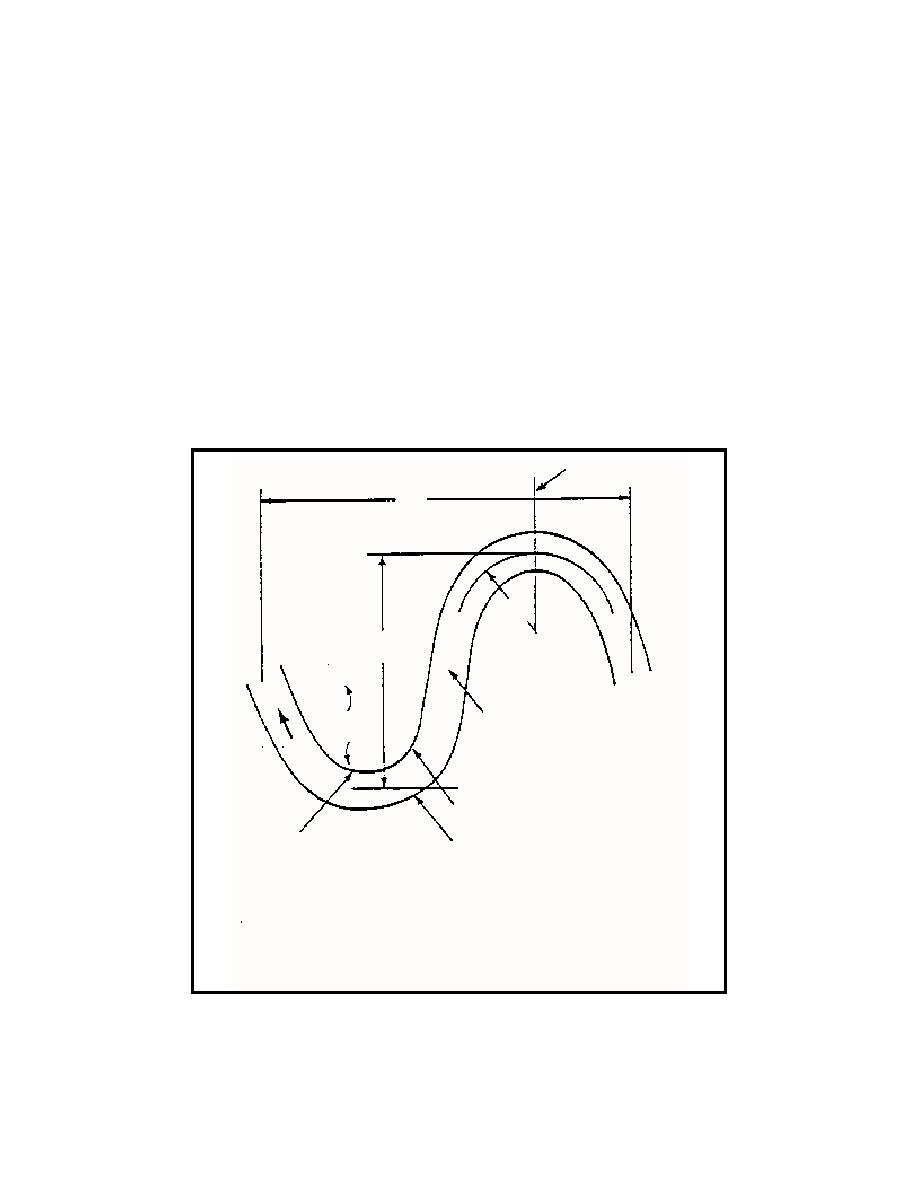
Fundamentals of Fluvial Geomorphology and Channel Processes
meander wave length (L) is twice the straight line distance between two consecutive points of similar
condition (i.e. pools or crossings) in the channel as depicted in Figure 3.9. This is sometimes referred to
as the axial meander wavelength to distinguish it from the channel length between inflection points which
is also sometimes referred to as the meander wave length. The meander amplitude (A) is the width of the
meander bends measured perpendicular to the valley or straight line axis (Figure 3.9). The ratio of the
amplitude to meander wavelength is generally within the range 0.5 to 1.5. It should be noted that the
meander amplitude and the width of the meander belt will probably be unequal. The meander belt of a
stream is formed by and includes all the locations held by a stream during its development history. In many
cases, this may include all portions of the present flood plain. Meander wave length and meander width are
primarily dependent on the water and sediment discharge, but may also be modified by confines of the
material in which the channel is formed. The effects of bank materials is shown by the irregularities found
in the alignment of natural channels. If the material forming the banks was homogeneous over long
distances, a sinusoidal alignment having a unique and uniform meander wavelength would be expected
although this rarely occurs in nature.
Axis of bend
L
rm
A
Point of inflection
Point
or crossover
Convex bank
Concave bank
Location of
point bar
L = Meander length (wave length)
A = Amplitude
rm = Mean radius of curvature
Figure 3.9 Definition Sketch for Channel Geometry (after Leopold et al.,
1964)
32



 Previous Page
Previous Page
